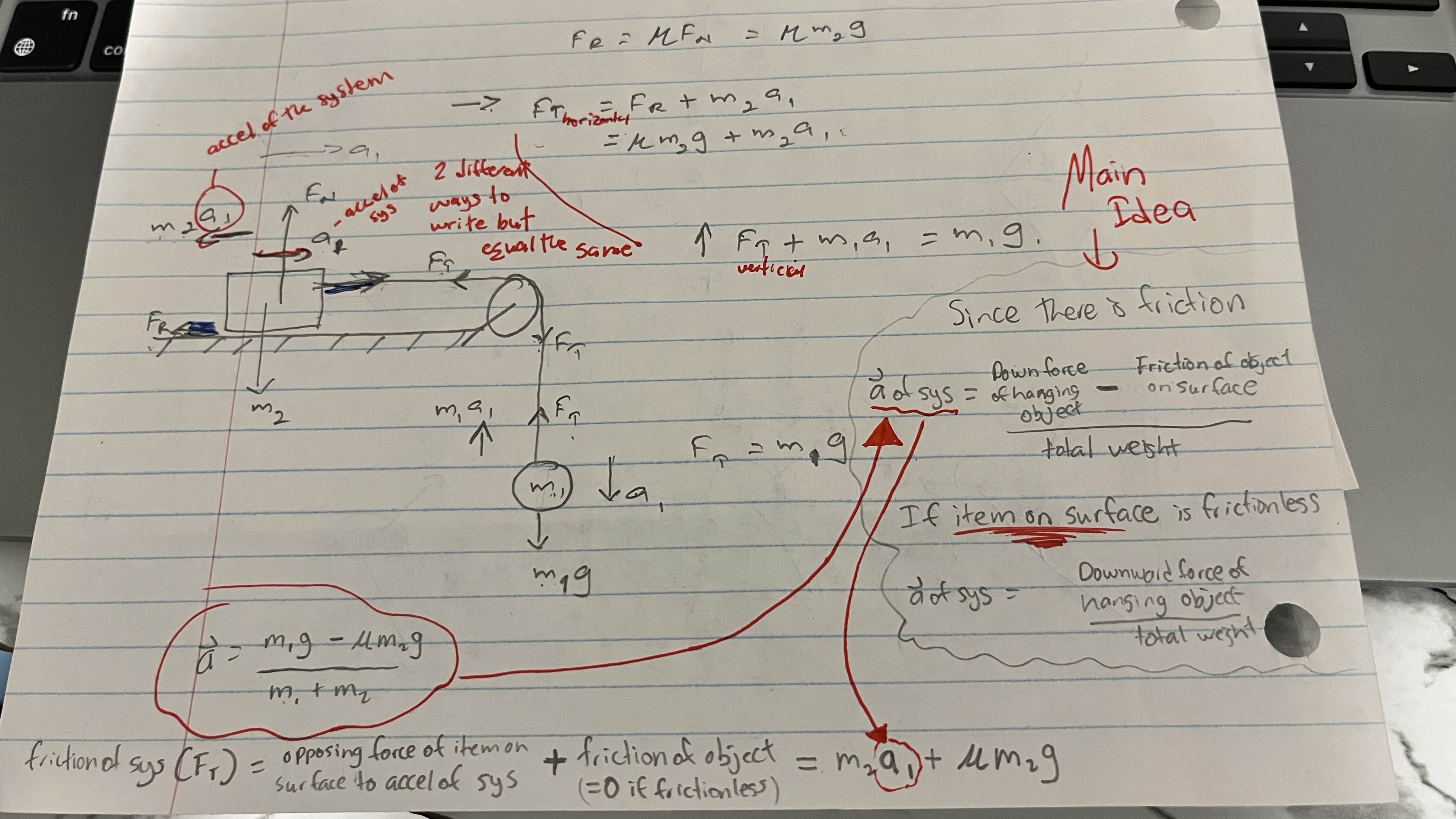Unit 4 - Dynamics
1/19
Earn XP
Description and Tags
Name | Mastery | Learn | Test | Matching | Spaced |
|---|
No study sessions yet.
20 Terms
What are the units for Newtons?
The units for newtons are in this picture
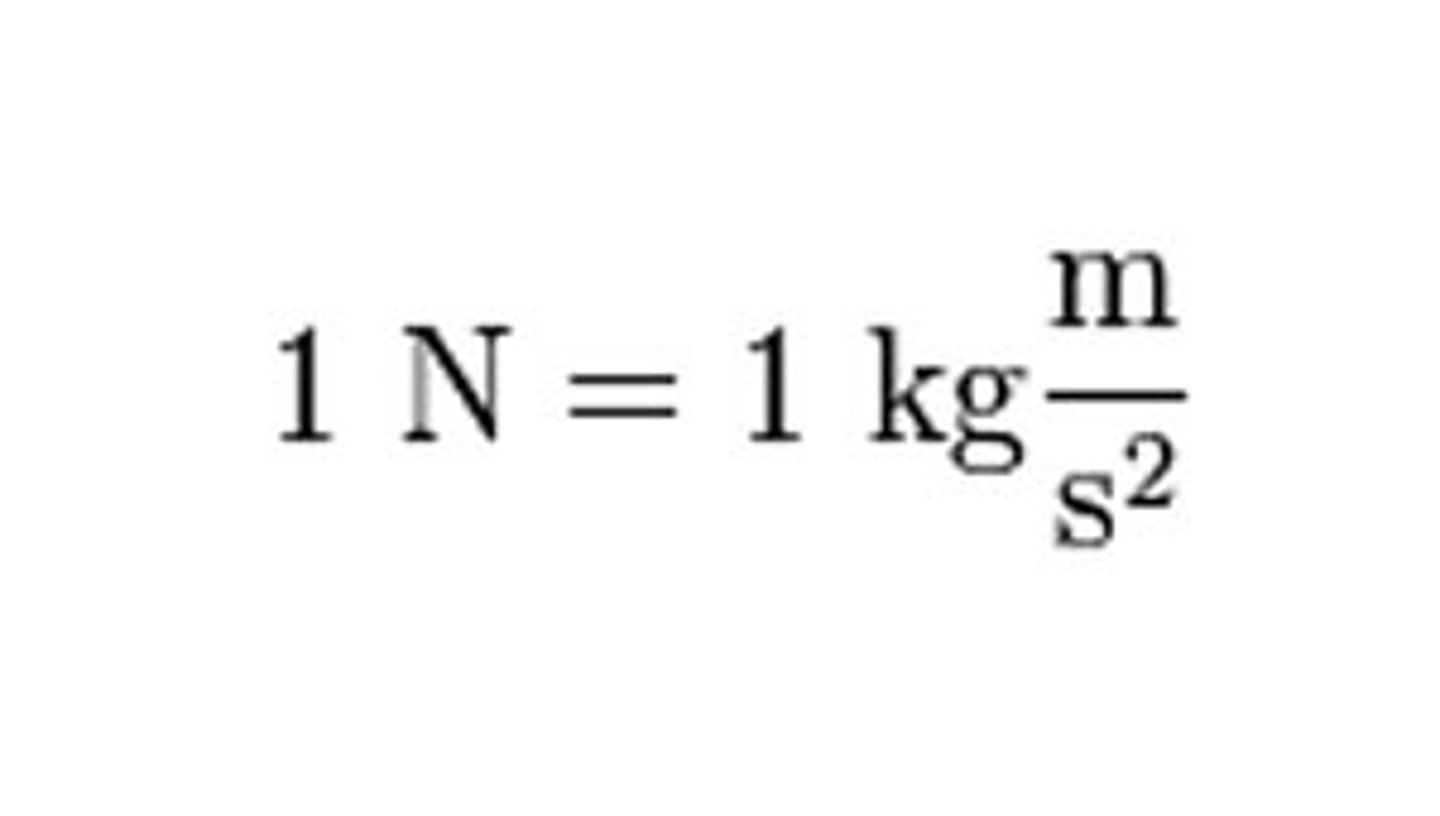
What is the formula for the "Force of gravity"?
F = mg (remember vector arrows on F and g)
F is in Newtons = kg m/s^2
m is mass in kg
g is accel of gravity in m/s^2
What is the Force of Gravity?
Force of gravity = attraction between masses (from their centres)
What are the 4 Fundamental Forces?
1. Electromagnetic
2. Nuclear
3. Strong (hold atoms together like) or like gravitation force
4. Weak (decay)
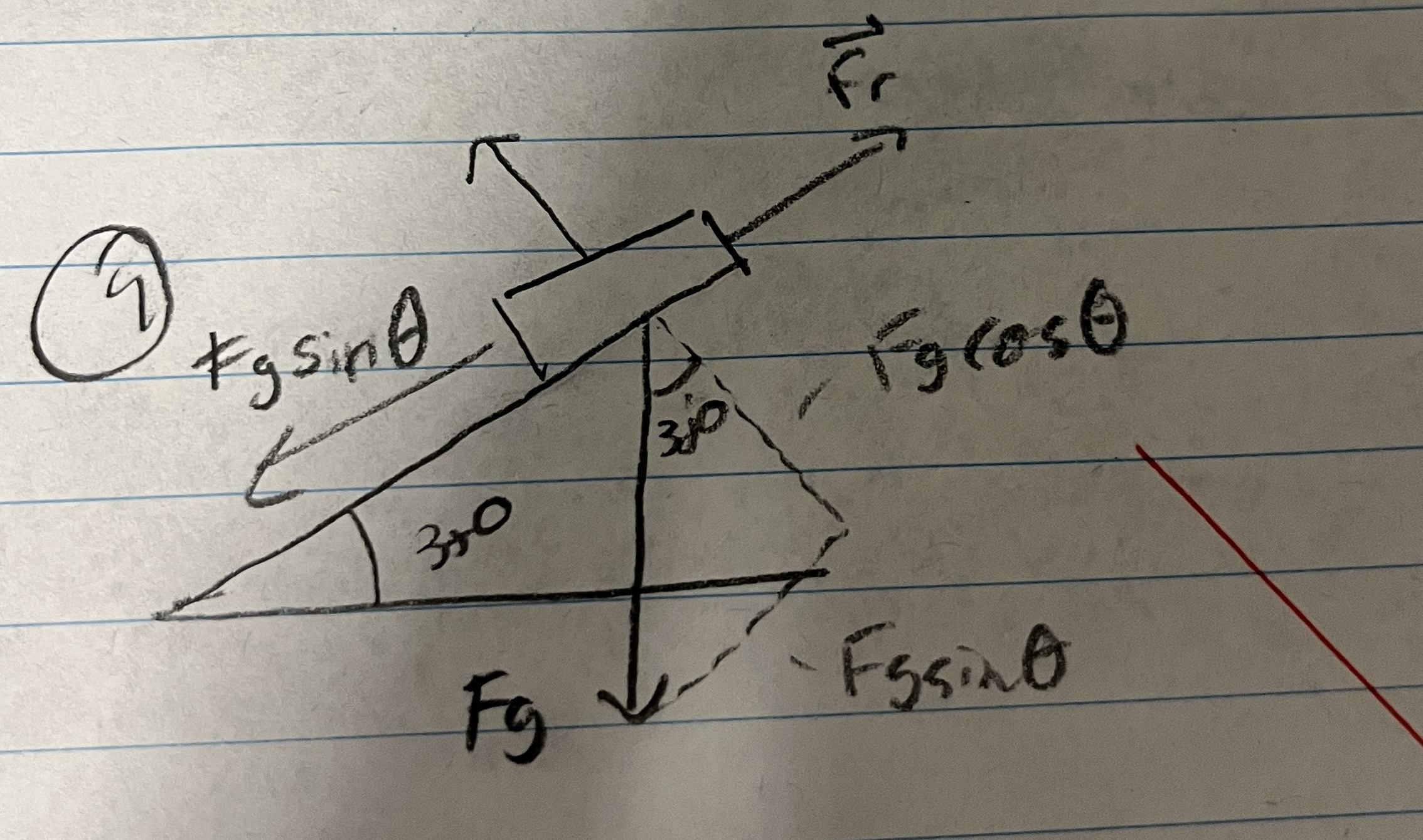
In a question like this, what will Fn ALWAYS BE? (you keep making a mistake here)
Fn here will Always be Fgcos0
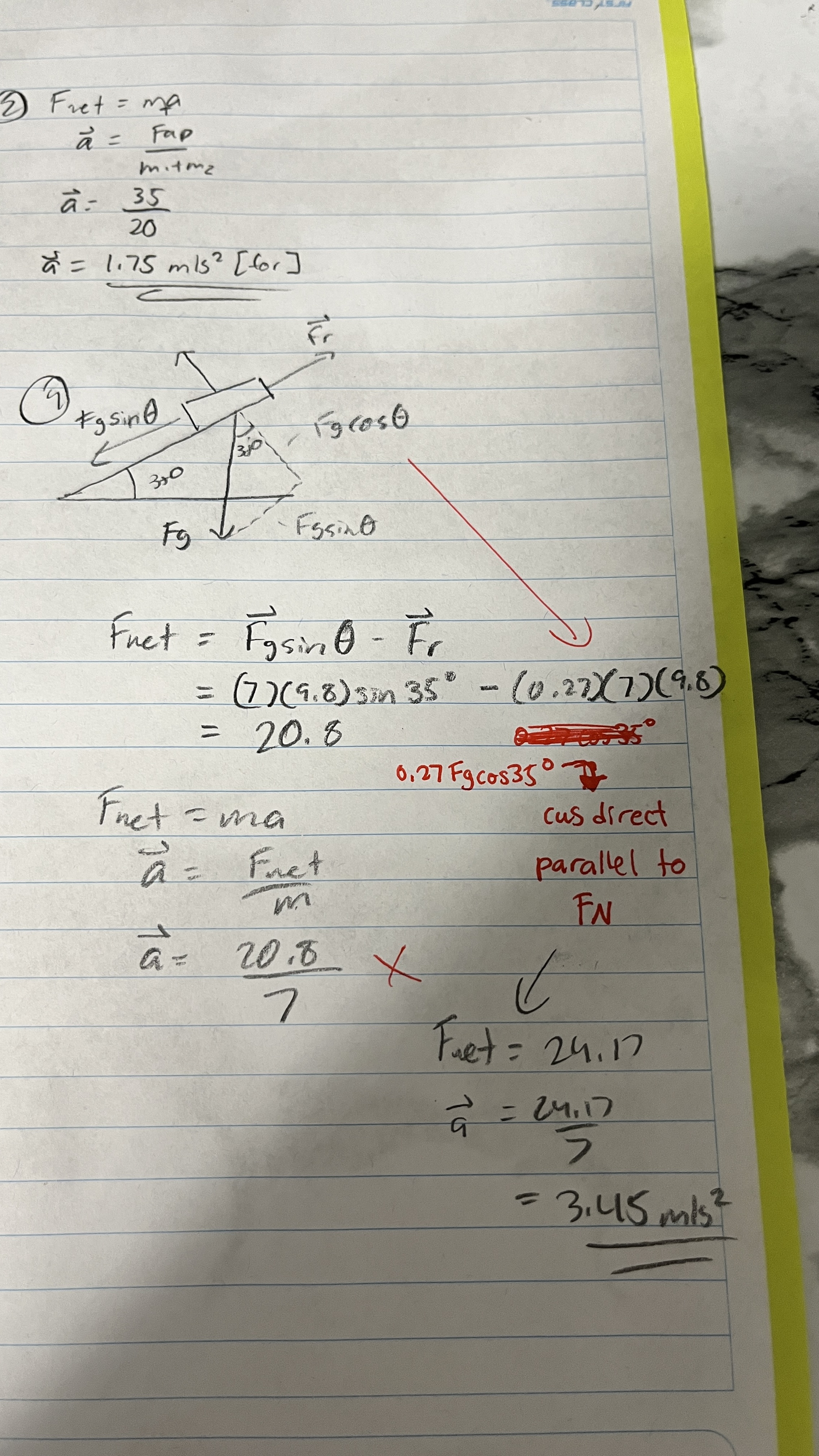
What is the diff between Mass and Weight?
Mass (kg) is always constant
Weight (N) is the effect of gravity on an object so it can always change
What MUST you remember to add to the F symbol when calculating weight?
Not only do you add the vector arrows to F and g in
F = mg
You MUST also add the g subscript to F
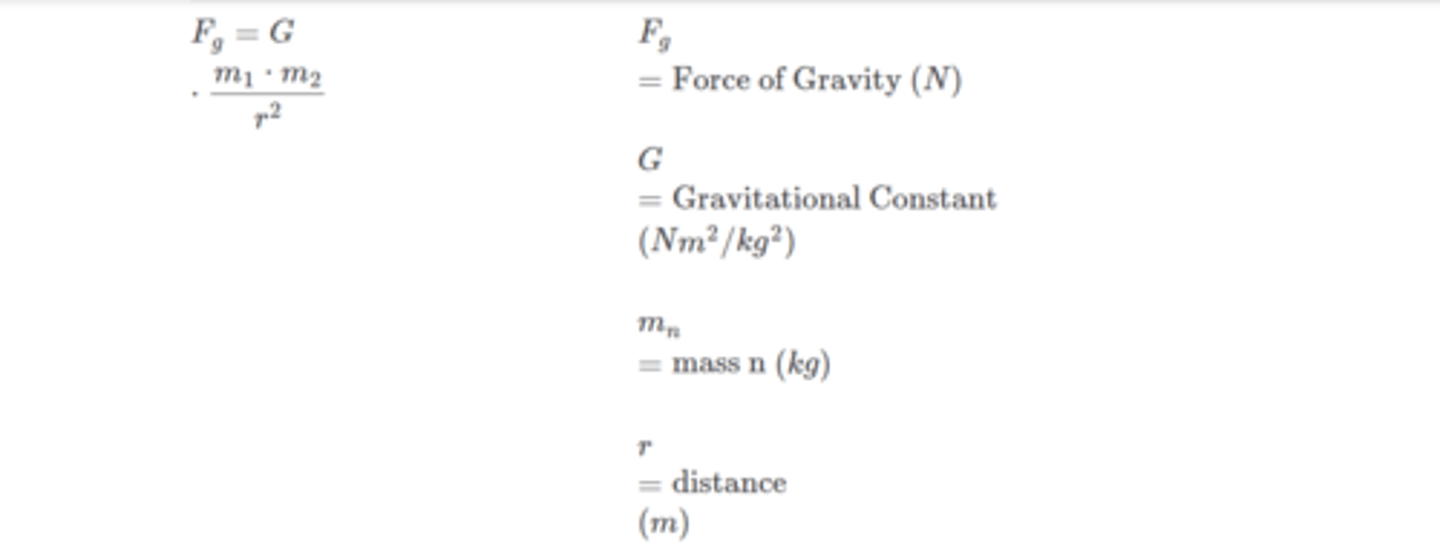
What does the Law of Universal Gravitation state?
Every particle in the universe attracts and is attracted to every other particle in the universe
What is the formula for the Law of Universal Gravitation?
What is G = ???
on the picture
G = 6.67 x 10^-11 Nm^2/ kg^2
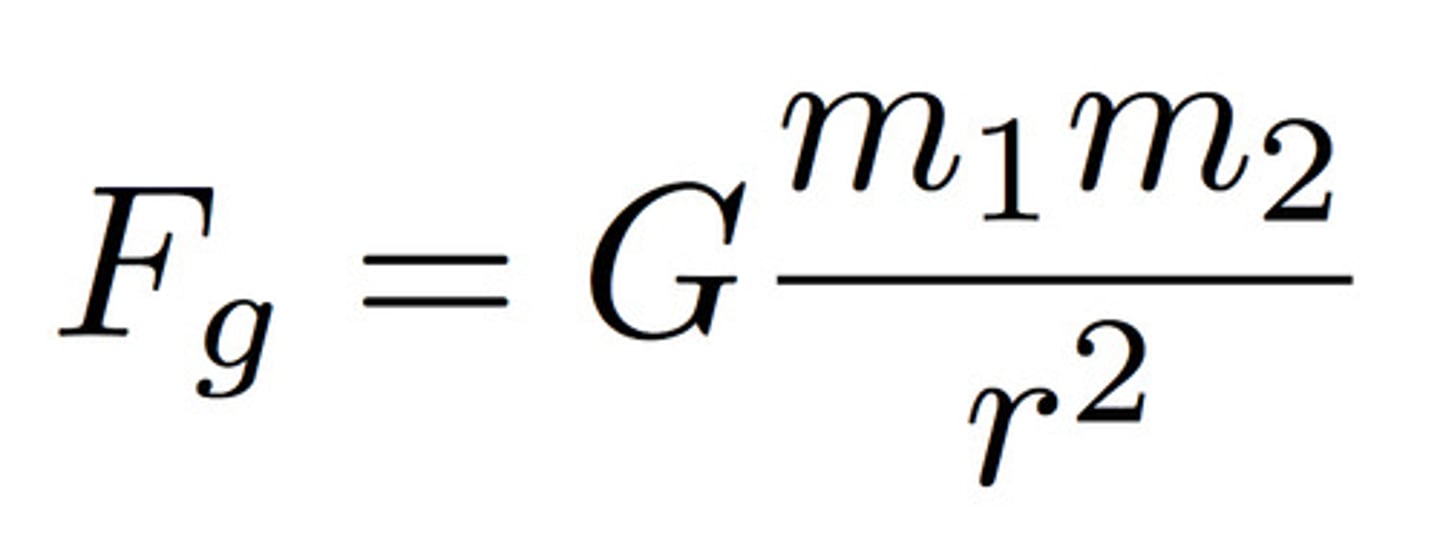
What are G-forces?
What is 1 g = ??? (on earth)
How do you calculate them?
- G-force is a measure of acceleration
- 1 g = 9.8 m/s^2 ( basically = accel due to gravity)
- You can calculate G-force by taking the rate of acceleration you are given and dividing by 9.8 cus thats the speed for 1g
EX: car accels at 4.9m/s^2. What is the g-force?
-> G force = 4.9/9.8 = 0.5g
Kinematics vs Dynamics
Kinematics = how things move
Dynamics = why things move
what is friction?
Friction is the Force that opposes motion
What did Aristotle state?
What did Galileo state?
Aristotle = all objects that move horizontally are in forced motion (car needs to accelerate to move)
Galileo = a force is only needed to keep an object in motion because of the opposite friction (with no friction, objects will continue moving forever)
What are Newtons 3 Laws?
1st = An object at rest will remain at rest or move with constant velocity when there is NO force acting on it
|
2nd = When the net force acting on an object is NOT ZERO, the object will accelerate in the direction of the exerted force"
|
3rd = For every action force, there is an equal and opposite reaction force
What are the 5 friction forces that oppose motion?
1. Sliding Friction = opposing sliding motion (its so hard for the earth's tectonic plates to slide past each other, cus when they do an earthquake happens)
|
2. Rolling Friction = opposes rolling motion (friction of road slowing the movement of a cars tire causing the car to decel)
|
3. Fluid Friction= opposes motion through fluid (let a boat coast in water and it will stop)
|
4. Limiting Static Friction = max val of friction just before the object slides off.
|
5. Kinetic Friction = opposes motion once object starts moving (this connects with 1,2, and 3 )
What is Fn, Fr, Fap, and mu when given a object at rest (static friction Q) on a inclined plane?
Look at pic
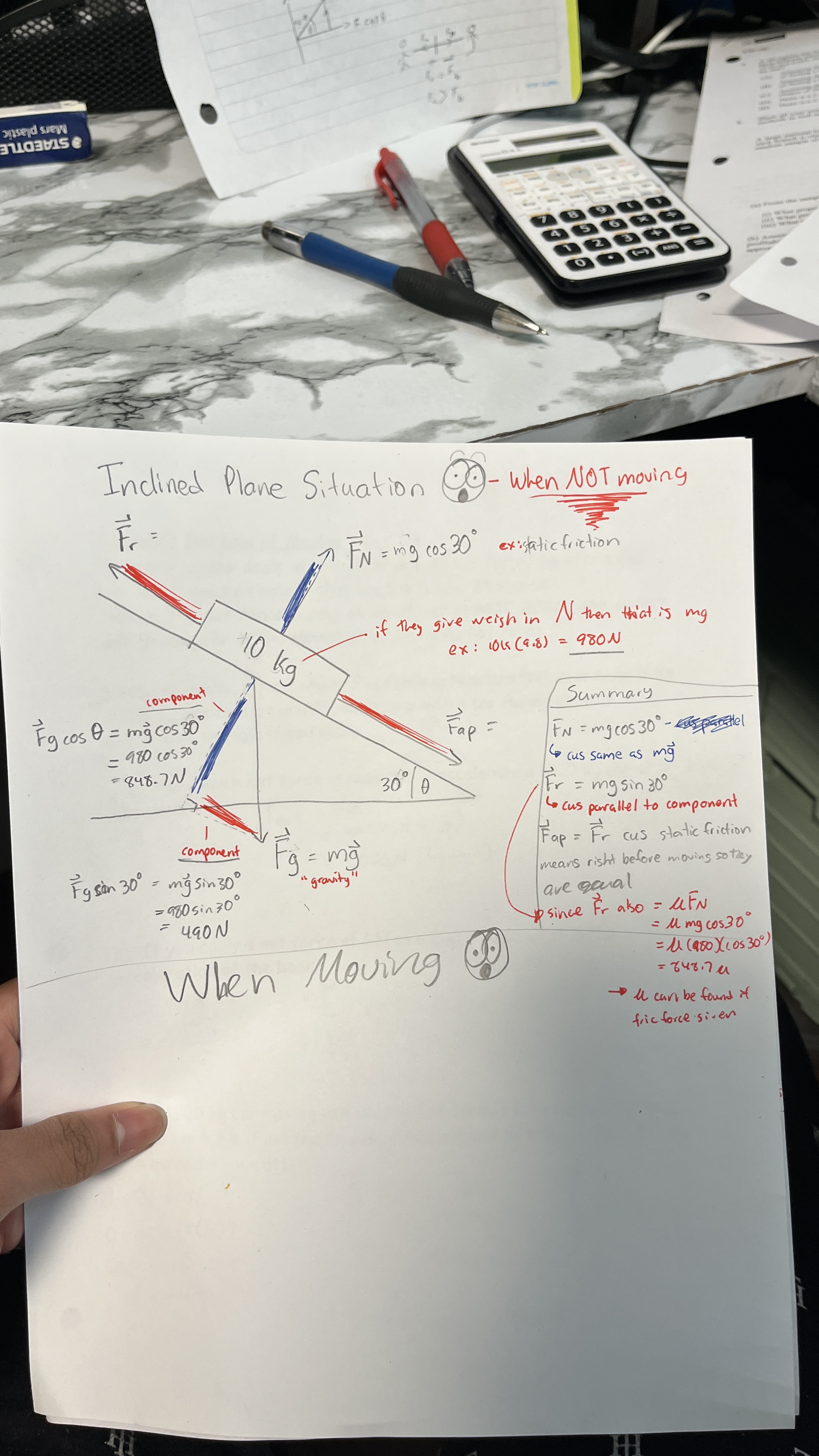
When should you include Fap on a Free Body Diagram?
Only when there is an APPLIED Force
- when someone or gravity is trying to push it (static friction = still on slope like quiz Q)
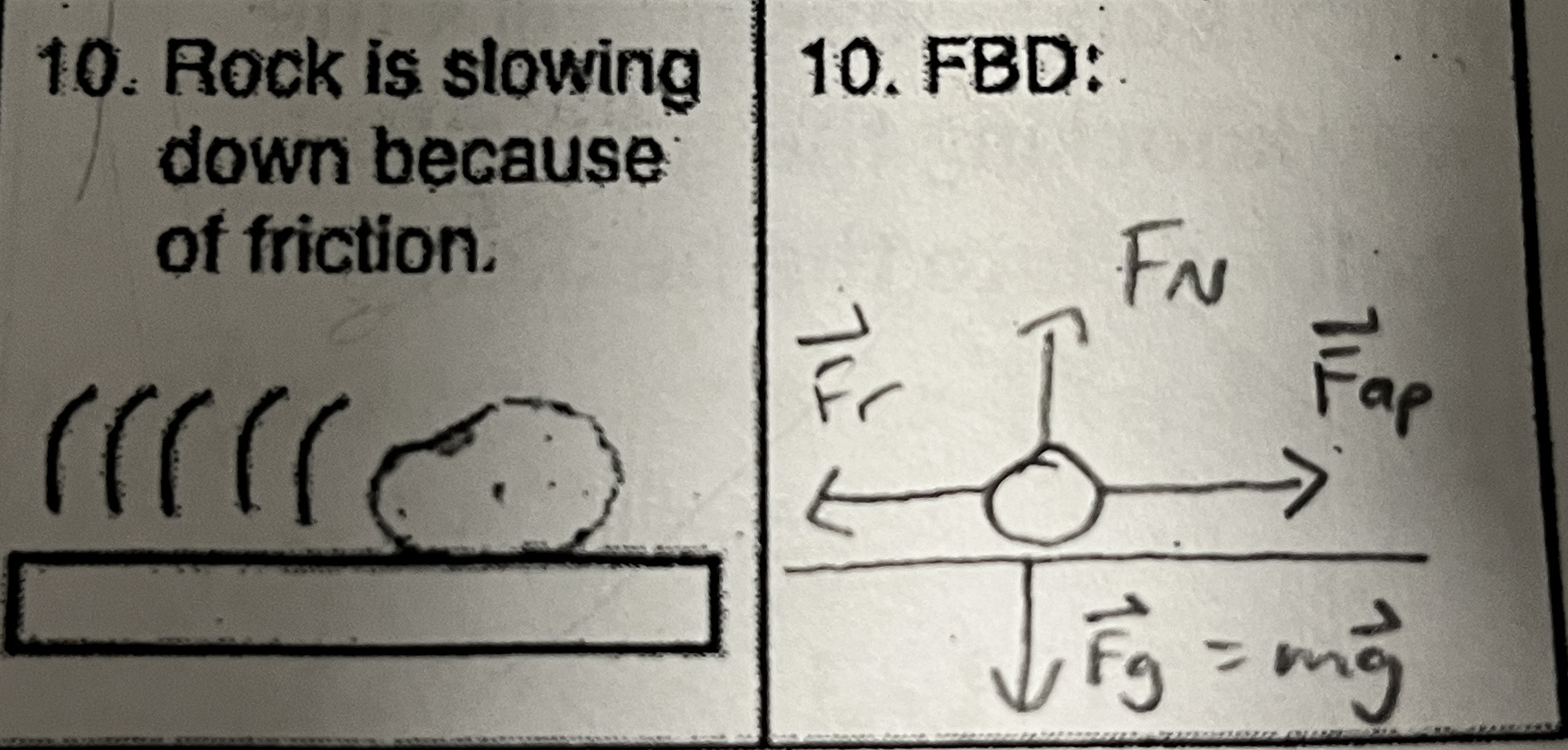
- if it's on a slope and there is a rope holding it so it doesn't go down the slope, then don't draw Fap

- if it's on a slope and theres a wall stopping rock, you need to show Fap so you can show the walls equal Fap force it gives back (then Fr + Fap wall = Fgsin0)
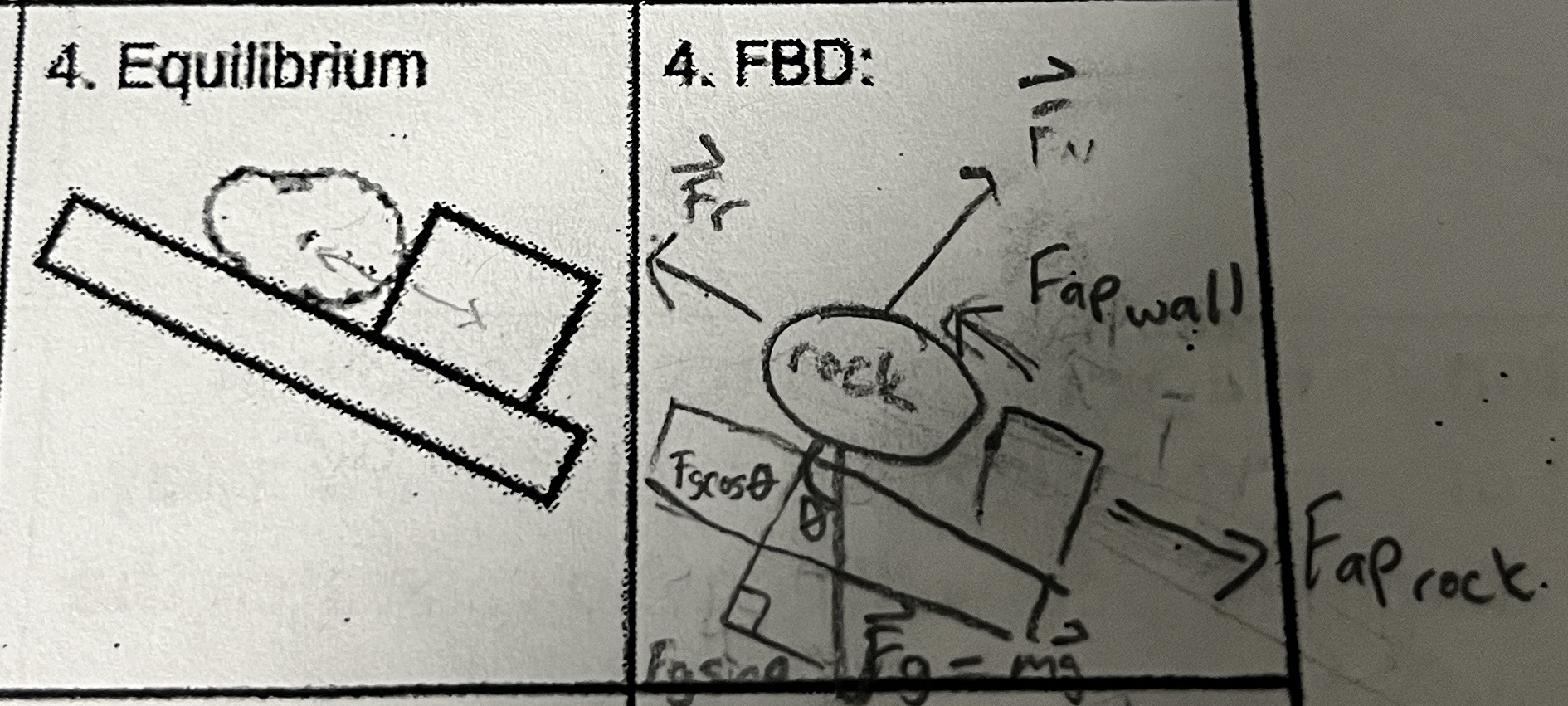
What must you not forget in FBDs?
Remember there can be friction for FBDs with something on surface.
--> Lets say a rope connected to a wall is connected to a rock.
Not only will there be Ft to the left of the rock on the rope, there will also be Fr.
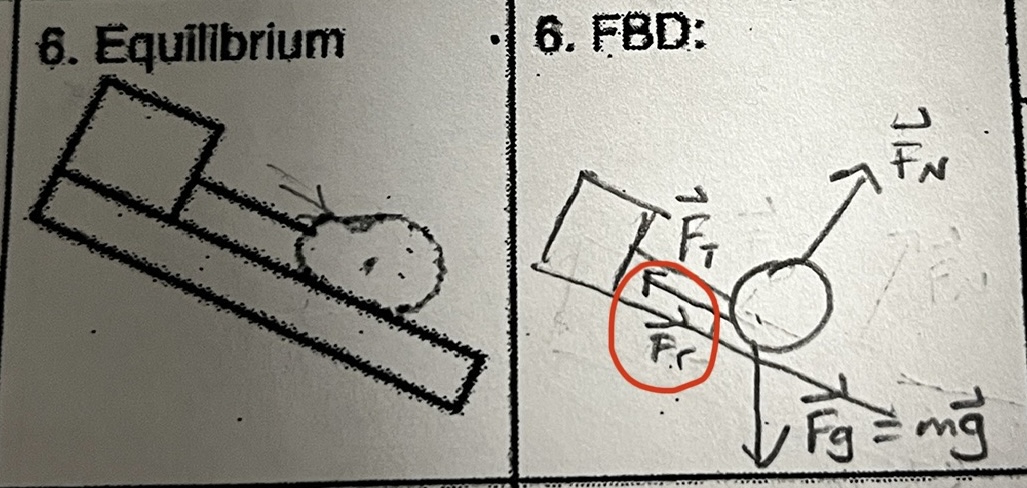
What is the Main idea of finding Acceleration of a 1 pulley system?
If it is one pulley, then most likely it is also 1 rope so FT will be the same for both.
m2a1 requires the acceleration of the system
This means to find the Tension of the sys you must also find accel of sys
